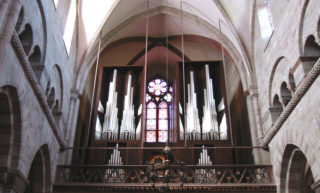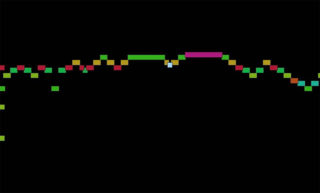Religion and literature
Sinfonieorchester Basel
7 and 8 February 2018
Nicolas Altstaedt, Violoncello
Mario Venzago, Conductor
Henri Dutilleux - Tout un monde lointain
Anton Bruckner - Symphony No. 3
Works by Anton Bruckner (1824 – 1896) form a common thread in this season’s program of the Sinfonieorchester Basel. After his third Mass, this concert brings you his third symphony paired with Dutilleux’s cello concerto.
While his masses are associated with his life before he moved to Vienna, his symphonies are strongly connected with the Austro-Hungarian capitol. Supported by patrons-of-the-arts Betty and Moritz von Mayfeld and his composition teacher Otto Kitzler, Bruckner grew towards the next phase of his musical career in which the symphony was the most important form of his artistical expression. Before Bruckner finished his first symphony Moritz predicted he would become a successful symphonist. He ended up composing nine.
Bruckner’s symphonies are characterized by extensive length (the eighth takes around 90 minutes), huge dynamic contrasts and climactic sound waves, structuring pauses (full stops in the score to divide the constituting parts) and religion-inspired choral elements.
It is often said that Bruckner’s symphonies are hard to appreciate because they lack any corresponding narrative to his life. This is not true. From a remark he made to a friend, we know the second part of the third symphony’s Adagio was dedicated to the memory of his mother. Later on in the same movement Bruckner reuses Wagner’s sleep motif from the Walküre, a second reference to her.
Another myth about Bruckner that needs more nuance, is the fact that he is a mere epigone of Wagner. Although the third symphony is dedicated to Wagner – Wagner could choose between the second and third and presumably picked the latter because his Tristan and Walküre were quoted in it – Bruckner is also indebted to other composers. The first bars of the first movement, for instance, show clear resemblance to the first bars of Beethoven’s ninth symphony with which Bruckner’s third also shares the D minor key. But above all is Bruckner a creative force of his own.
While Bruckner’s work is permeated with religious references, Dutilleux’s work is often inpsired by art and literature. The concerto Tout un monde lointain, based on poems by Baudelaire, is a prime example. Its score has no official mentioning of the solo instrument, but as it was dedicated and premiered by the eminent cellist Rostropovich, it is also being referred to as Dutilleux’s cello concerto. Rostropovich had a great reputation and his treatment of the A-string (the highest) was particularly well-known. Dutilleux (1916 – 2013) wrote the piece in such a way that Rostropovich could shine. Hence, it is worth paying attention to the cello’s A-string during the performance, in particular at the transition from the first to the second movement.
Commissioned in 1960, it took the composer 10 years before it was ready to be given its first performance in 1970. Dutilleux was a slow composer, always doubting the quality of his work. He prioritized structure over other aspects of a composition. Symmetry is an important characteristic, in the cello concerto too. The third, central movement – the poem on which it is based provided the title – is flanked by two slow movements. As the first theme returns at the end of the second movement, the last movement revisits themes from throughout the piece, thus creating unity and symmetry.
These English program notes have been published in the magazine (No. 5, 2017/2018) of the Sinfonieorchester Basel.








Comments